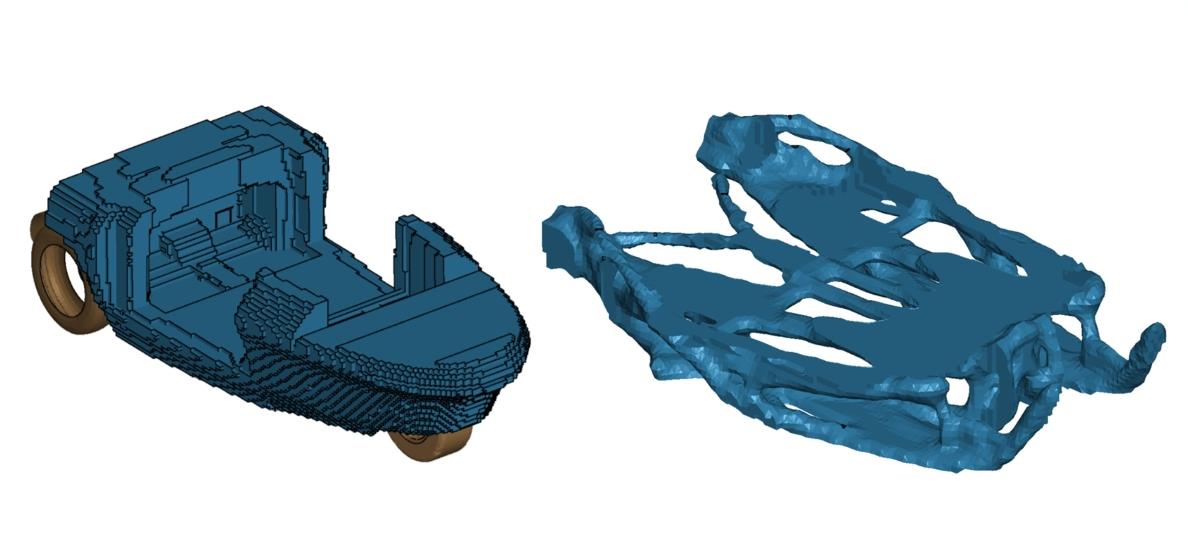- info@bola.world
- Customer Support :0086 (0553)-5628 068
- SUBSCRIBE
SUMMARY
Legislation is pushing the automotive industry to develop more sustainable vehicles. The complexity of a vehicle’s product lifecycle results in an array of sources of carbon emissions. This complexity, along with cost considerations, leads to a number of competing design requirements that must all be satisfied. Design then becomes a balancing act of these competing factors, and powerful design techniques are needed if better solutions to more sustainable vehicles are to be achieved.

WHY DO WE NEED BETTER VEHICLES?
Legislation on net zero emissions is driving the mobility sector’s technology roadmap. Developments have recently focused on reducing tailpipe emissions, and this has led to the increased output of electric vehicles. The next stage targets improved vehicle efficiency, and therefore finding ways to make vehicles lighter has become an increasingly important part of the design process.
The Automotive Council Road Map highlights the need for full lifecycle assessment - the envionmental impact of the entire product lifecycle of the vehicle - by 2030. Some of the activities that contribute to the carbon footprint of the overall lifecycle of a vehicle are:
· Raw materials production
· Manufacturing – Production and running of machinery
· In-use phase – Emissions resulting from vehicle use
· Distribution/supply chain - The transportation of raw materials, components and finished vehicles
· End of life – Disposal vs reuse and remanufacturing of materials
It can be seen then that the environmental impact from a vehicle is dependent not only on fuel efficiency but also on the resources and processes used in manufacturing and end of life. The fact that there are so many sources of pollution in the life cycle means that vehicle designers are met with an array of challenges, especially as many of the factors compete. For example, whilst a lighter material may improve efficiency and cut fuel emissions, there may be a slightly heavier raw material that is more sustainable to produce and leads to a solution with an overall lower carbon footprint.
Another challenge that most vehicle manufacturers must of course address is cost, because the product must be affordable for consumers. A design approach that can deal with a complex set of competing factors is therefore necessary to develop better solutions for more sustainable vehicles.
HOW TO MAKE VEHICLE DESIGN BETTER
There is a set of techniques that Far-UK Ltd describes collectively as Analysis Led Design. This starts from an input of multiple performance requirements and moves to a solution that best satisfies them, and it is the process that Far-UK is using to develop better mobility solutions for the future.
These techniques balance the array of competing factors and produce several possible design solutions that all lie within the specified parameters. The ability to modify both the material and where it is located within the design space using this approach leads to a large number of solutions, each of which can be scored on various criteria. The option that best fits the criteria can then be taken forward for refinement.
TARGETING THE SAFETY STRUCTURES MAKES A BIG IMPACT
Making the bulky safety structures at the core of a vehicle’s body lighter can have a large impact on overall weight reduction, and hence can significantly impact emissions, so it is an area that should be targeted when designing more sustainable vehicles. Importantly though the safety of these components cannot be compromised, so the criteria of weight, cost and environmental performance must all be achieved whilst still satisfying mechanical performance requirements.
There have been many advances in using materials such as composites that are both lightweight and deliver excellent mechanical performance. But weight saving can also be achieved by using less material overall. This of course has further advantages because it decreases the carbon contribution from other stages of the lifecycle, such as raw material production, as well as reducing cost. Analysis Led Design provides solutions that reduce the amount of material needed whilst still satisfying the mechanical performance requirements.
Multi-disciplinary load path optimisation is an early stage of the analysis led design process that begins from a space envelope and results in a structure with minimised mass.

CONCLUSION
Analysis Led Design is a set of tools and techniques that can be used to balance many competing requirements, so it is a powerful resource for solving complex design challenges where mechanical performance cannot be compromised. Far-UK Ltd uses these techniques to develop more sustainable vehicles with affordable manufacturing solutions. It aims to make a positive difference to the planet through innovation in design and manufacturing.